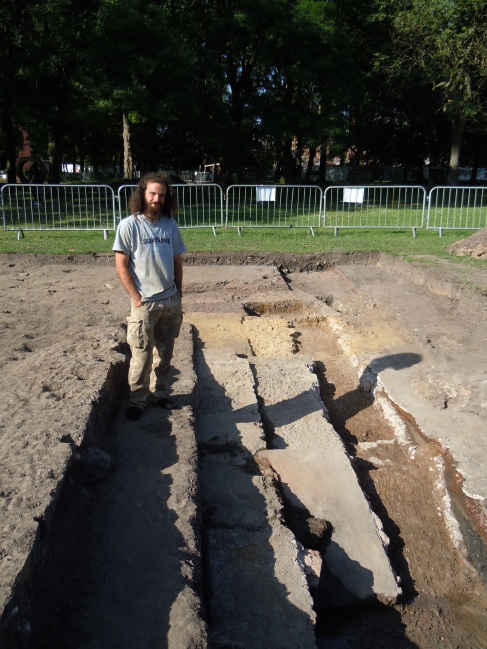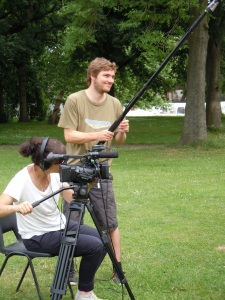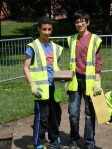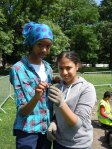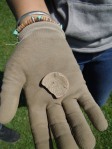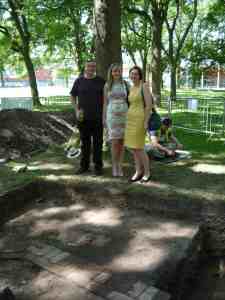When Professor Siân Jones and Dr Melanie Giles asked me to complete some sketches in the field on the Whitworth Park Community Archaeology and History Project, it hadn’t occurred to me that there was, forgive the analogy, a rich vein of talent waiting to be rediscovered. I had trained as a Fine Artist well over twenty years ago and as a child I always remember being good at drawing and painting but many of these skills had since been left to gather dust.
I was on the Whitworth Gallery’s Volunteer and Training Programme after redundancy from my previous job as I felt volunteering in the arts and culture sector would help boost my confidence and refresh my skills. I heard about the archaeological dig in the Park and it appealed to me not only because it tapped into my interest in history but also because as a volunteer it would provide a great way of meeting and bonding with people. Little did I know in the first discussions about the placements that my dormant artistic career would be seen as a valuable addition to the team of students, community volunteers and professional archaeologists.
Therefore, imagine my surprise when I was asked by said archaeologists to pick up my pencils again to capture the activities in Whitworth Park. They say you never forget how to ride a bike and somehow, if you have the ability, drawing seems to share that procedural memory. As soon as I started, all the techniques and stylistic touches I had used in the past were revealed again, rather like the Whitworth Park dig allowed us to briefly uncover the Park’s own former glories. It was quite thrilling to reconnect with those abandoned skills and bits of my own past.

My basic principle was to find visually interesting ‘tableaux’ which combined the labour of the dig – people troweling, digging, sifting, drilling – with the peeling back of layers and layers of earth, revealing geological features and materials and particular finds. Work had to be done quickly because archaeological digs change rapidly. The sketching of Trench 1 was particularly difficult. In blazing heat, I had to capture the richness of the materials found under the concrete used to fill in the Park’s old boating lake. Silt was crowded with old bottles and they were being removed as I was sketching. In that instance, I only marked the positions and then took a photo to enable later reconstruction of these finds long after they’d disappeared. And the heat also determined how long I could stand, sketch and get the details.
People also move about a great deal. Again, photos of certain activities enabled me to refer back to positions of those working in the trenches and then embed them back into the sketches and this was the case with drawings of Trenches 3 and 4. Once the general layout was completed in pencil, I used pen and ink to add high contrast and brush work using water to dissolve the ink into washes. Some embellishments were also made with graphite to add textures. The features revealed on the dig certainly allowed for dramatic detail. The old wall of the bandstand in Trench 3 was a particular challenge in terms of detail and the perspectives of the stepping down of each trench were of great visual interest as were the tools – buckets, trowels, spades – used each day.

I was surprised and delighted at the results. I think the comments that the pictures have an antiquarian quality to them, ‘a Victorian or Edwardian feel’ according to Manchester Museum’s Bryan Sitch, is highly appropriate given the dig’s focus on Victorian life and experiences in the Park. The work has certainly fired up my enthusiasm to do more and the experience of working on an archaeological dig has been very fulfilling and given me renewed confidence in my abilities.






